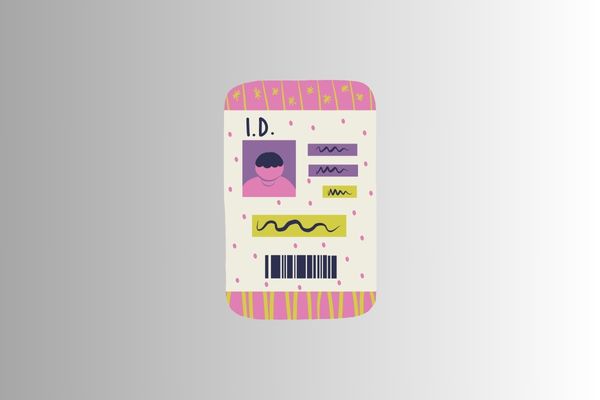What is an e-identification? What information does an e-identification contain about a Vietnamese citizen?
What is an e-identification? What information does an e-identification contain about a Vietnamese citizen?
According to the provisions of Clause 17, Article 3 of the Law on Identification 2023, e-identification is defined as follows:
An e-identification is the identity of a Vietnamese citizen as represented through an e-identificationentification account created by the e-identificationentification and authentication system.
According to the provisions of Article 31 of the Law on Identification 2023, it is further specified as follows:
E-identification
1. Each Vietnamese citizen is issued one e-identification.
2. An e-identification includes an e-identificationentity and the following information:
a) Information stipulated from Clause 6 to Clause 18 and Clause 25 of Article 9, Clauses 2 and 4 of Article 15 of this Law;
b) Information stipulated in Clause 2 of Article 22 of this Law as integrated according to the citizen’s request and must be authenticated through national and specialized databases.
3. The e-identification is used for administrative procedures, public services, transactions, and other activities as required by the citizen.
4. The head of the identity management agency under the Ministry of Public Security has the authority to issue e-identifications.
5. The Government of Vietnam prescribes the order and procedures for issuing e-identifications.
According to the above regulation, an e-identification includes:
- E-identificationentity:
The e-identificationentity of a Vietnamese citizen is some of the citizen's information in the Identity Database that allows the unique identification of that person in the electronic environment through the e-identificationentification and authentication system and to create e-identifications:
+ Personal identification number;
+ Surname, middle name, and given name;
+ Date of birth;
+ Gender;
+ Facial image;
+ Fingerprints.
- Additional information:
+ Place of birth.
+ Place of birth registration.
+ Hometown.
+ Ethnicity.
+ Religion.
+ Nationality.
+ Blood type.
+ 09-digit ID number.
+ The date, month, year of issuance, place of issuance, validity period of the identity card, citizen identity card, 12-digit ID number issued.
+ Surname, middle name, given name, personal identification number, 09-digit ID number, nationality of father, mother, spouse, children, legal representative, represented person.
+ Permanent residence.
+ Temporary residence.
+ Current place of residence.
+ Mobile phone number, email address.
+ Biometric information.
+ Occupation, except for People's Army, People's Public Security, and Cryptographic forces.
- Information related to health insurance card, social insurance book, driver’s license, birth certificate, marriage certificate, or other documents as decided by the Prime Minister of the Government of Vietnam, except for information on documents issued by the Ministry of National Defense as integrated upon the citizen’s request and must be authenticated through national and specialized databases.

What is an e-identification? What information does an e-identification contain about a Vietnamese citizen?
What are the regulations on uses of e-identification in Vietnam?
According to the provisions of Article 33 of the Law on Identification 2023, the utilization of the e-identification is specified as follows:
- The e-identification proves the identity and other integrated information of the e-identification holder to conduct administrative procedures, public services, transactions, and other activities as required by the citizen.
- During the process of handling administrative procedures, public services, conducting transactions, and other activities, if there is a discrepancy between the information printed on the identity card or the information stored in the encrypted storage section of the identity card with the information in the e-identification, the agency, organization, or individual shall use the information in the e-identification.
Under what circumstances is the e-identification locked?
According to the provisions of Article 34 of the Law on Identification 2023, the circumstances for locking an e-identification are specified as follows:
Locking and unlocking the e-identification
1. The e-identification is locked in the following cases:
a) At the request of the e-identification holder;
b) When the e-identification holder violates the agreement on the use of the national identification application;
c) When the e-identification card is revoked, seized;
d) When the e-identification holder dies;
đ) At the request of the investigating agency or other authorized agencies.
2. The e-identification is unlocked in the following cases:
a) At the request of the e-identification holder as stipulated in point a, Clause 1 of this Article;
b) When the e-identification holder has rectified the violations of the agreement on the use of the national identification application stipulated in point b, Clause 1 of this Article;
c) When the e-identification card is returned to its holder stipulated in point c, Clause 1 of this Article;
d) At the request of the investigating agency or other authorized agencies stipulated in point đ, Clause 1 of this Article.
3. When locking the e-identification as stipulated in points a, b, c, and đ of Clause 1 of this Article, the identity management agency must immediately notify the e-identification holder.
4. The head of the identity management agency under the Ministry of Public Security has the authority to lock and unlock e-identifications.
5. The Government of Vietnam prescribes the order and procedures for locking and unlocking e-identifications.
The e-identification is locked in the following cases:
- At the request of the e-identification holder;
- When the e-identification holder violates the agreement on the use of the national identification application;
- When the e-identification card is revoked, seized;
- When the e-identification holder dies;
- At the request of the investigating agency or other authorized agencies.
Note that in the case of the e-identification holder’s death, the identity management agency must immediately notify the e-identification holder when locking the e-identification.
The Law on Identification 2023 will take effect from July 1, 2024, except for Clause 3 of Article 46.
LawNet